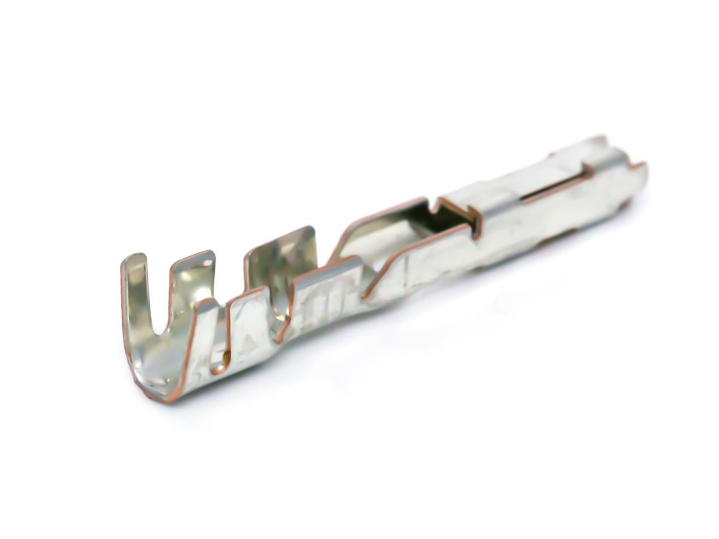XC92
Proven Member
- 1,573
- 362
- Jul 22, 2020
-
Queens,
New_York
I'm not sure if I'm using the correct terminology. What I mean is what kinds of individual metal connectors, male and female, terminate the various wires that go into the actual plastic connectors, male and female, that connect various sensors and actuators to the wiring harness?
Yesterday while replacing the reverse switch on the manual trans on my 1G Talon Tsi, I accidentally severed one of the 2 wires that go into the Engine Coolant Temperature Switch connector next to the coolant cap. So I cut the other wire and took it inside to have a look, and was able to remove both connectors, which appear to be what I believe are called spade crimp connectors, in this case I think 2.8mm.
I'm referring to these, not to the plastic connectors they're inserted into, of which there are many types in a typical car. That's a whole other matter. I'm wondering what these are properly called, and what kinds and sizes a 1G 2.0 turbo DSM typically uses. I'd like to buy a whole set of them to have on hand for such situations.
I'm going to be removing a bunch of parts in the engine bay soon to clean things up, replace some gaskets and o-rings and fix some idle issues, and there's a good chance that I'll be repairing some broken or frayed connector wiring. Is it mostly 2.8mm, or also 4.8mm & 6.3mm?
Are yet other kinds of connectors used, like MOLEX, DuPont, etc.? Like the ones that go inside the diagnostic port under the dash or that connect various wiring harnesses?
I was able to use what I believe are called butt connectors + heat shrink to reconnect the wires to the existing female spade connectors, but in the future I might not be so lucky so it's a good idea to have some on hand. Plus it's the right way to fix things.
I have several crimping tools, both the free-swinging and ratcheting kind, so I'm probably good there. I've also got plenty of heat shrink tubing.
And yeah, I know, this is very basic stuff. But I don't know what these things are properly called so I can't search for them. Took a while to find the little I did. Is there a comprehensive reference somewhere?
Yesterday while replacing the reverse switch on the manual trans on my 1G Talon Tsi, I accidentally severed one of the 2 wires that go into the Engine Coolant Temperature Switch connector next to the coolant cap. So I cut the other wire and took it inside to have a look, and was able to remove both connectors, which appear to be what I believe are called spade crimp connectors, in this case I think 2.8mm.
I'm referring to these, not to the plastic connectors they're inserted into, of which there are many types in a typical car. That's a whole other matter. I'm wondering what these are properly called, and what kinds and sizes a 1G 2.0 turbo DSM typically uses. I'd like to buy a whole set of them to have on hand for such situations.
I'm going to be removing a bunch of parts in the engine bay soon to clean things up, replace some gaskets and o-rings and fix some idle issues, and there's a good chance that I'll be repairing some broken or frayed connector wiring. Is it mostly 2.8mm, or also 4.8mm & 6.3mm?
Are yet other kinds of connectors used, like MOLEX, DuPont, etc.? Like the ones that go inside the diagnostic port under the dash or that connect various wiring harnesses?
I was able to use what I believe are called butt connectors + heat shrink to reconnect the wires to the existing female spade connectors, but in the future I might not be so lucky so it's a good idea to have some on hand. Plus it's the right way to fix things.
I have several crimping tools, both the free-swinging and ratcheting kind, so I'm probably good there. I've also got plenty of heat shrink tubing.
And yeah, I know, this is very basic stuff. But I don't know what these things are properly called so I can't search for them. Took a while to find the little I did. Is there a comprehensive reference somewhere?
Last edited:



















